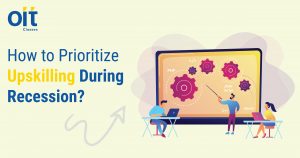
15 Effective Social-Emotional Learning Strategies

Students that excel in social and emotional abilities surpass their peers. They continue their regular lives and have the opportunity to improve their scholarly, occupational, and social abilities. From successful problem-solving to self-discipline, impulse control to emotional management, there is something for everyone. Social-Emotional Learning (SEL) establishes a foundation for long-term beneficial influence on children, individuals, and communities.
So, let’s look at various methods for providing social learning into the classroom.
The 15 methods may look modest at first glance, yet they are incredibly successful at influencing behavior.
- Encourage the writing of magazines:
Diaries are suitable for children of different temperaments and abilities and provide a common developmental foundation for everyone, including quiet children, talkative children, and children with special needs. Students are encouraged or asked to write freely. Writing a retrospective diary helps them become more aware of their thoughts, feelings, feelings, and the resulting actions. Sharing answers with partners and the entire class is another convenient way to encourage social and emotional learning through a retrospective diary.
- Encourage reading:
Reading aloud allows children to become more aware, empathetic, and compassionate of others’ thoughts, feelings, and emotions while managing their thoughts, feelings, and emotions, and developing conflict resolution and management skills. Helps you to have.
- Encourage expressiveness through art:
Art is an excellent stress-reduction approach. Working with partners also enhances teamwork, partnership, co – operation, transfer, and the capacity to create relationships. Furthermore, this is an excellent opportunity to hone both self-awareness and social cognition.
- Establish an alumni association:
Reunions on a daily or weekly basis create a healthy social space for children to address difficulties, plan class activities, and support one another. This is a venue for youngsters to communicate themselves freely, become courteous, and resolve problems. Lead from the front and accept responsibility.
- Discuss dealing with emotions:
Children of all ages need guidance and practice to manage their emotions. This can be partially practiced while reading by talking about the character’s emotions and emotional needs. In addition, you can discuss how to deal with children’s own emotions in different situations. These discussions not only help children understand and recognize their emotions and emotional needs, but also provide them with suggestive strategies for managing their emotions and the resulting behavior.
- Active listening practice:
Active listening practice is an important skill that can be useful in all situations and stages of life. Not only is it useful in the classroom, but it is also useful outside the classroom and later in life. Active listening helps to clarify situations, feelings, feelings, and behaviors.
- Practice to respect and disagree:
People must be disagreeable about one thing or another. However, it is important to respectfully oppose it. When there is disagreement, emotions are often high, which quickly escalate into debate and, worse, into conflict. Therefore, it is important to be friendly and disagree with the students. H. Admit disagreements. This can be achieved by participating in discussions and group discussions.
- Teamwork and group activities:
Teamwork and group activities are great media for social and emotional learning. Children will learn a lot, whether in small or large groups. You will learn not only teamwork, cooperation, collaboration, empathy and compassion, but also roles and responsibilities. These groups can proceed at their own pace or pre-adjust to ensure a healthy combination of group members. This guarantees that they can learn the greatest from it. This is also a great exercise in building a community.
- Buddy system:
The buddy system brings together older and younger students from different classes to play, read, or run art projects. This is an important way to foster student social interaction, communication, empathy, teamwork, collaboration, cooperation and compassion. Young students have a special feeling of being guided by older students and learn to be with older people. Older people take responsibility and learn to take care of younger people.
- Role playing:
Social and emotional learning is not just about communicating concepts theoretically. It’s also about putting them into practice, which is an opportunity offered by role-playing games. Structured scenarios can be used for role-playing, and immediate feedback from teachers helps students understand the different nuances of social interaction. This is an effective way to try to understand the situation not only from the perspective of yourself but also from the perspective of the other person, which allows you to better understand and empathize with the situation.
- Play the game:
Communication, empathy, relationship skills, problem-solving, critical thinking, collaboration, coping with failures, and managing success are just a few of the skills children can acquire through play. The communication of learning is also very high because of the fun and learning elements.
- Set SMART goals:
SMART’s goals are concrete, measurable, agreed, relevant and time-limited. Help students reach their full potential by challenging them to reach their goals set within a specific time frame. Achieving SMART goals should be rewarded, and if that is not possible, further guidance, support, and encouragement should be provided to ultimately reach the goals.
- Practice mindfulness:
Mindfulness helps manage stress and anxiety effectively. A self-awareness skill aimed at focusing on the present to accept one’s situation. Mindfulness helps children relax and be happy at the moment and enhances overall well-being. There are many ways to teach your child mindfulness, including breathing, guided meditation, and focusing on just one.
- Fostering a growth mindset:
By understanding that diligence, patience, and well-thought-out strategies can help you succeed, you will develop a growth spirit for students who are demonstrating limited abilities in their tasks.
- Discuss empathy:
It is the basis for a better understanding of others by considering their emotions, perspectives, and resulting actions. This enhances your ability to manage yourself and others in social situations.
Conclusion:
The above is a list of indicators of some social and emotional learning strategies, showing various ways in which the social and emotional skills of children and young adults can be effectively developed. Being aware of your thoughts, feelings, and the resulting actions is a stepping stone for them to become better individuals. The development of their social consciousness will ultimately lead to the formation of a better, more forgiving and inclusive society.





